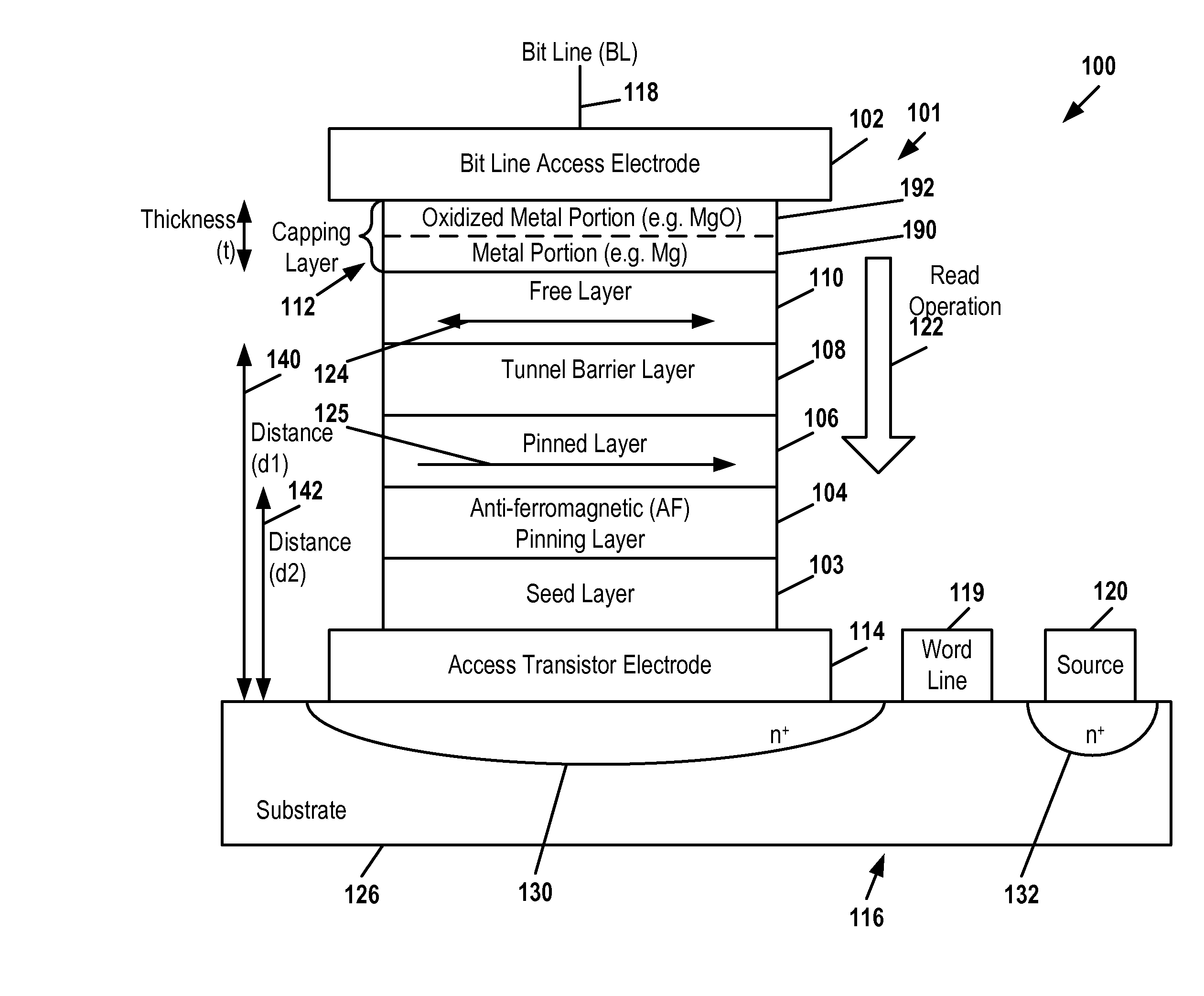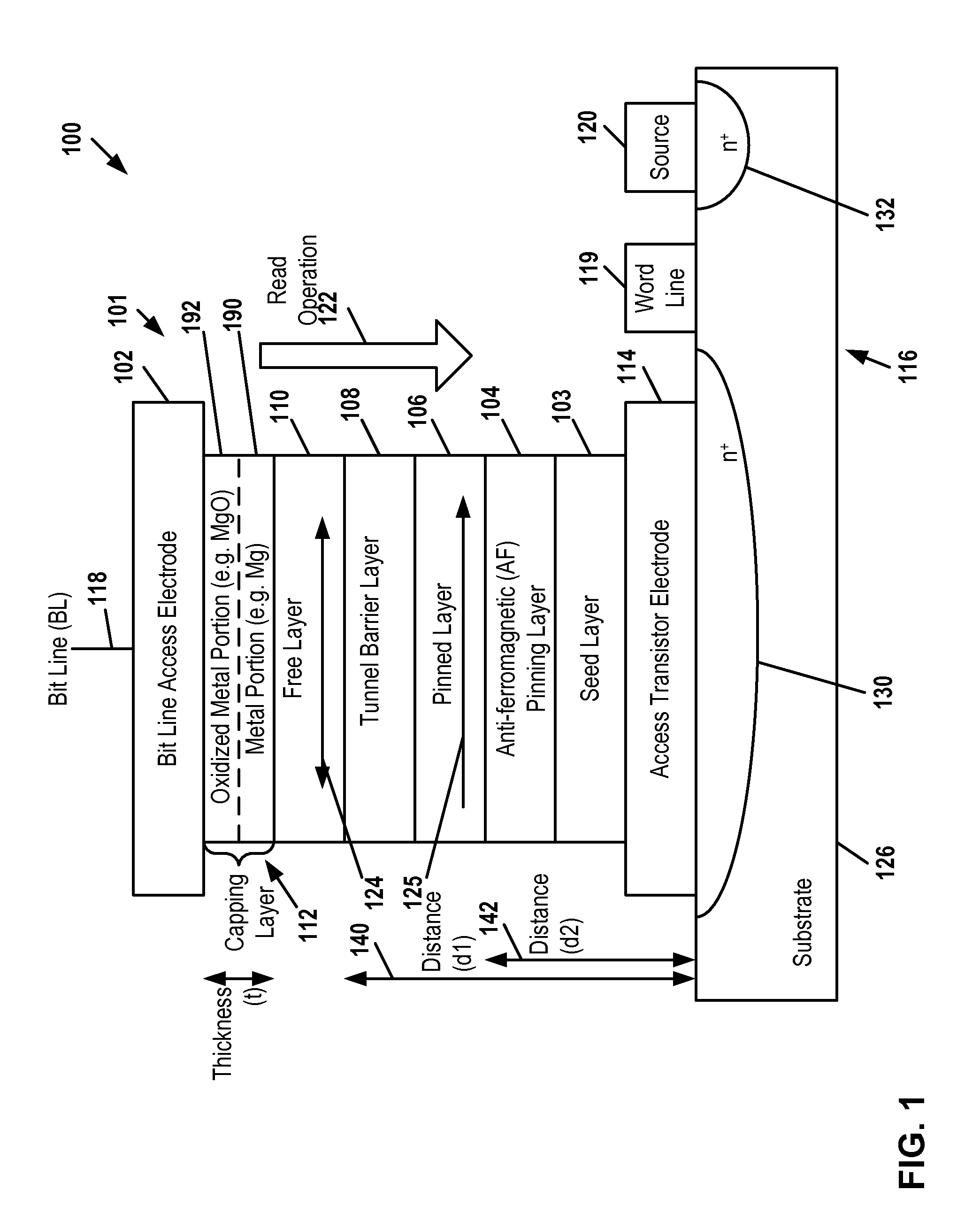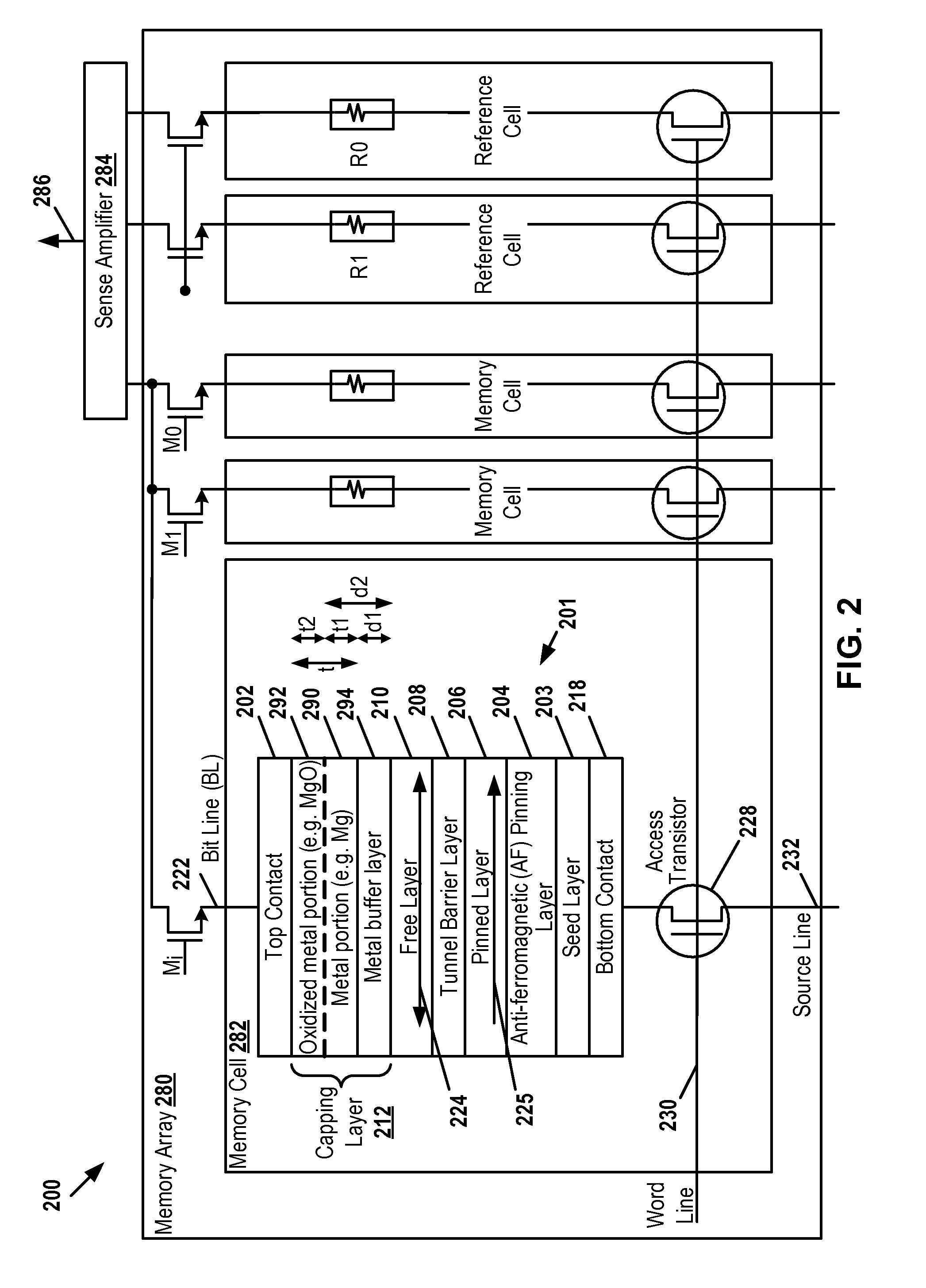Magnetic tunnel junction device and fabrication
a technology of magnetic tunnel junction and fabrication, which is applied in the direction of magnetic bodies, instruments, record information storage, etc., can solve the problems of increasing degrading the magnetoresistance (mr), and reducing the current density of high-quality metal/metal-oxide capping layers, etc., to achieve the effect of increasing the switching current density and reducing the switching current density
- Summary
- Abstract
- Description
- Claims
- Application Information
AI Technical Summary
Benefits of technology
Problems solved by technology
Method used
Image
Examples
Embodiment Construction
[0018]Referring to FIG. 1, a first illustrative embodiment of an element of a spin-torque-transfer magnetic random access memory (STT-MRAM) is depicted and generally designated 100. The element of the STT-MRAM 100 includes a memory cell having a magnetic tunneling junction (MTJ) device 101 and an access transistor 116 on a substrate 126. The MTJ device 101 includes an access transistor electrode 114, a seed layer 103, an anti-ferromagnetic (AFM) pinning layer 104, a pinned layer 106, a tunnel barrier layer 108, a free layer 110, a capping layer 112, and a bit line access electrode 102 coupled to a bit line 118. The access transistor electrode 114 is coupled to a drain region 130 of the access transistor 116. The access transistor 116 is gated by a word line 119 and has a source region 132 coupled to a source contact 120.
[0019]The seed layer 103 is in contact with the access transistor electrode 114. The seed layer 103 provides a surface for MTJ film deposition and can be composed of...
PUM
 Login to View More
Login to View More Abstract
Description
Claims
Application Information
 Login to View More
Login to View More - R&D
- Intellectual Property
- Life Sciences
- Materials
- Tech Scout
- Unparalleled Data Quality
- Higher Quality Content
- 60% Fewer Hallucinations
Browse by: Latest US Patents, China's latest patents, Technical Efficacy Thesaurus, Application Domain, Technology Topic, Popular Technical Reports.
© 2025 PatSnap. All rights reserved.Legal|Privacy policy|Modern Slavery Act Transparency Statement|Sitemap|About US| Contact US: help@patsnap.com



